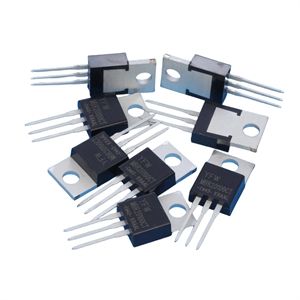Date:2024-10-09 Categories:Product knowledge Hits:279 From:Guangdong Youfeng Microelectronics Co., Ltd
Diodes are very common in electronic application circuits, but how are they applied in electronic communication devices? In circuit operation, a diode continuously switches back and forth to achieve non blocking between the desired direction and direction. When a semiconductor switch requires a brief period of time, known as recovery time, recovery, and conductive block change. During recovery time, a small amount of signal can pass in the wrong direction. Fast recovery diodes have the potential for small recovery times in diode design, so high-power, high-frequency devices that do not require uninterrupted signals are not necessary.
Taking Schottky diodes as an example, Schottky diode manufacturers state that when current enters the cathode, it cannot pass through the diode with a negatively charged cathode, and this same charge is blocked. The current enters the anode, but can pass through the positively charged anode and cathode, continue through the other side of the diode, and in the rest of the circuit. In most applications, such as when converting automatic control signals, the conduction and resistance between diode switches are periodic. The rated current of a Schottky diode is the main nominal value of the Schottky diode, for example, 10A/100V Schottky diode, 10A is the rated current.
The usual definition of rated current is the rated average current that the Schottky diode can pass through. But some tests are conducted with square waves, which means that a square wave current with an average value of 10A can be passed. Some tests require direct current, which means they can pass a direct current of 10A. In theory, for silicon diodes, diodes tested with square waves can pass through larger DC currents because square waves with the same average current will cause greater losses to the diode compared to DC currents. So can a 10A Schottky diode necessarily pass a current of 10A?
Not necessarily, it's related to temperature. When your heat dissipation conditions are not good enough, the current that Schottky diodes can pass through will be limited by the junction temperature. Taking a certain Schottky diode as an example, its characteristics are reverse withstand voltage of 40V, fast operating speed, high current, but low reverse withstand voltage, and relatively fast recovery time, so it can be replaced with multiple models.
When current enters the cathode, it cannot pass through the diode of the negatively charged cathode, and this same charge is blocked. The current enters the anode, but can pass through the positively charged anode and cathode, continue through the other side of the diode, and in the rest of the circuit. In most applications, such as when converting automatic control signals, the conduction and resistance between diode switches are periodic.
At this point, we come to the conclusion that when a diode is conducting, a negative charge is established at the anode of the diode through the current flowing through the diode. When it then switches to blocking mode, which allows current to flow through the diode before the reverse charge dissipates during charging. When the charge dissipates and the diode begins to block the signal, it is called the recovery time of the diode. Of course, there are still questions about the recovery time of fast recovery diode 3. Welcome to communicate online.

Previous: Classification, Structure, and Principle of MOSFET
Next: Using voltage inspection method to quickly locate fault points in integrated circuits